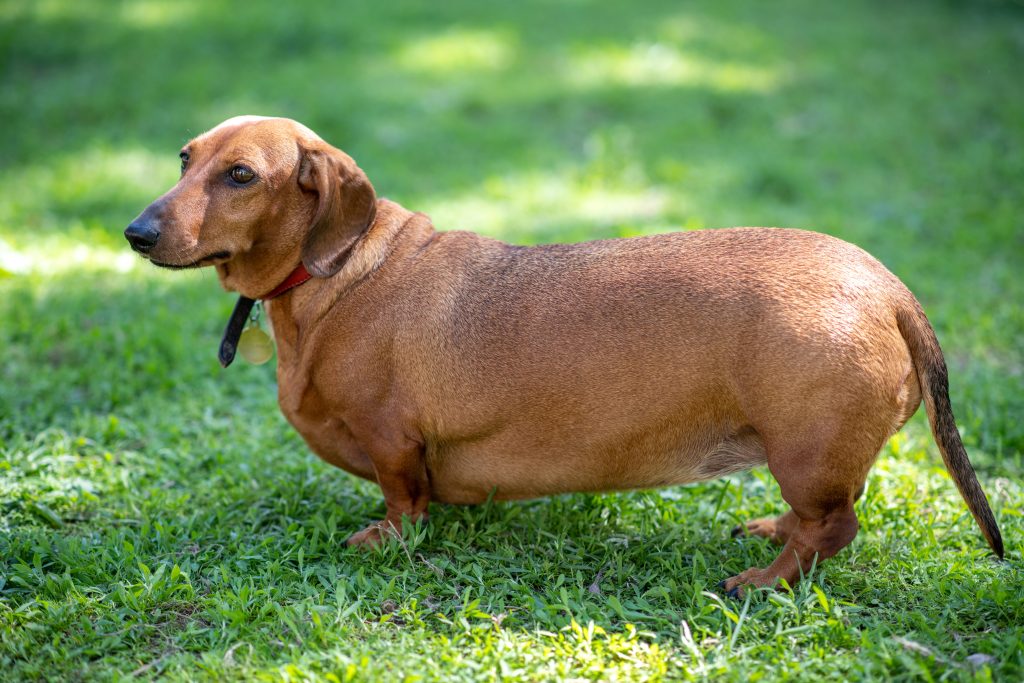Obesity is on the rise in pets. Over the last 10 years the number of obese cats has increased with roughly 169%, and while the increase is slightly lower for dogs, it’s still a staggering 158%. Research done by the Association for Pet Obesity Prevention showed that 61% of cats and 59% of dogs were classified as being overweight or obese in 2022. It’s not only cats and dogs that are increasingly getting more heavy, also other types of animals that are kept as pets are at risk, and in pet birds it’s even the number 1 health issue seen. Obesity often has health implications and may affect the lifespan of your pet. So, let’s have a further look at what pet obesity is, how you can determine if your pet is overweight or obese, and what steps you can take to help them in losing weight.
What is pet obesity?
A dog or cat is considered obese when they are above 20% of their ideal body weight. When they are10% above their ideal body weight they are considered overweight. Parrots are considered obese if they are 15% above their ideal weight.
Research suggests that just like in humans, obesity in dogs is heritable and some breeds have a higher tendency to become overweight and obese compared to others. The following breeds are considered to have a predisposition:
- Beagle
- Pug
- English Springer Spaniel
- Border Terrier
- Cocker Spaniel
- Cavalier King Charles Spaniel
- Labrador Retriever
- Golden Retriever.
In cats the results found in research done looking at the connection between genetics and obesity were conflicting, but they did find that the domestic shorthair cat was of higher risk than long haired cats.
Risk factors
Research has shown that owner related factors are the biggest reason their pet becomes overweight or obese. Examples of this are feeding an unsuitable diet, feeding incorrect portions, or when the frequency and/or length of exercise declines. Another contributing factor is that owners often underestimate the body condition of their pet and believe they have a good weight while they are actually being overweight, or even obese. Other factors that can play a role in a pet becoming obese are breed, age, neuter status or medical reasons (disease and/or medication).

Health Implications
A pet that is obese has an increased risk for several health issues like diabetes, kidney disease, respiratory and heart disease, joint problems, liver problems, high blood pressure, chronic inflammation and some forms of cancer. A common health issue seen in overweight and obese pet birds is fatty liver disease.
How to determine if your pet is obese?
Dog
Too Thin: When viewed from above the waist is prominent. The ribs are easily visible and have no fat cover.
Underweight: When viewed from above the dog will have an hourglass shape. The ribs will be visible.
Ideal weight: When viewed from above a slight waist is seen. Ribs are not visible but are easily felt.
Overweight: Ribs will be hard to feel. From above no waist is visible.
Obese: Ribs are very difficult to feel and from above the waist will be broadened.
Cat
Too Thin: When viewed from above the waist is prominent. From the side a tummy tuck is visible. The ribs are easily visible and have no fat cover.
Ideal weight: When viewed from above the cat will have a visible, but not prominent waist. From the side there will be a tummy tuck visible. The ribs will be slightly visible, can easily be felt, and have a thin layer of fat.
Overweight: There is little to no waist seen from above, and the back is slightly broadened. Ribs will have a medium layer of fat and aren’t seen or easily felt. There will be no to little abdominal tuck visible from the side.
Obese: Ribs will be difficult to feel. The back will be extremely broadened and there is no waist visible. The cat will have a round prominent belly.
Bird
To determine if your pet bird is at a good weight you will need to feel their breastbone.
Too Thin: No fat cover and loss of breast muscle. Breastbone feels very sharp.
Underweight: No fat cover and loss of breast muscle. Breastbone is easily felt and sharp.
Ideal weight: A well rounded breast muscle is present, and the breastbone can be felt prominent but is not sharp.
Overweight: Well-rounded breast muscle with some fat cover. It’s hard to feel the breastbone and can only be felt by applying slight pressure.
Obese: Well-rounded breast muscle with fat cover. Fat will also be found under where the breastbone ends. It will be very hard or impossible to feel the breastbone.
What steps to take when your pet is overweight or obese?
- Prevent high calorie/high fat snacks and treats.
- Stick to the food portions your pet should get, use a measuring cup or scale to be precise. Be extra vigilant of amounts if your pet has a predisposition to getting overweight.
- Pick a high quality, species appropriate food. Especially in pet birds the main reason seen for being overweight is eating an inappropriate diet, like a seed heavy or getting excess sunflower seeds.
- If your pet is spayed or neutered, adjust their food intake if required. Neutering can increase the risk of becoming overweight.
- Use puzzles or slow feeders for feeding to ensure slow consumption.
- Make sure your pet gets plenty of (species appropriate) exercise. Dogs can be taken on regular walks and swimming. Additionally, playing, enrichment activities, or even exercise on a treadmill can help with weight loss. Cats can exercise by playing and by providing them with special cat furniture to climb and explore on, like wall boards, an exercise wheel, or catio. Other pets can get exercise from providing them with plenty of time outside of their cage, properly sized cages so they can climb, move and explore, and providing material to explore and exercise in, like exercise wheels and enrichment materials which will engage them to move and explore.
Conclusion
Obesity is a rising health issue seen in pets which can have an effect on their health and lifespan. Pet owners play a crucial role in getting and keeping their pet at a healthy weight and body condition. There are tools available to determine if your pet is overweight, but if you are unsure, don’t hesitate to consult a professional to determine your pet’s body condition and assist you and your pet in the weight loss journey. Would you like to know more about our pet care services, feel free to contact us. We will be happy to help.

